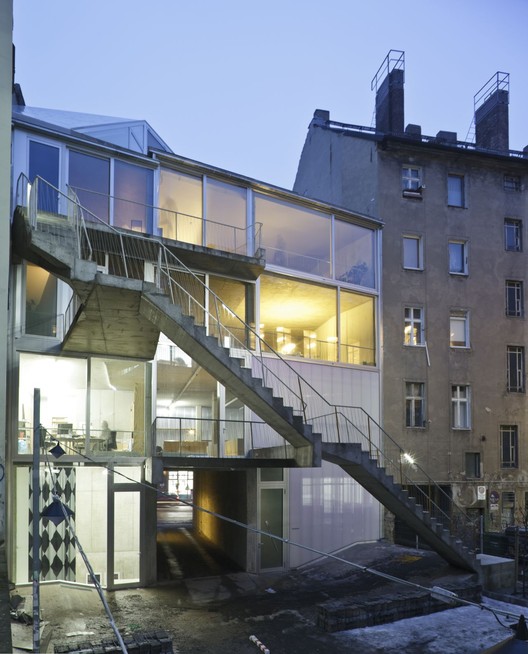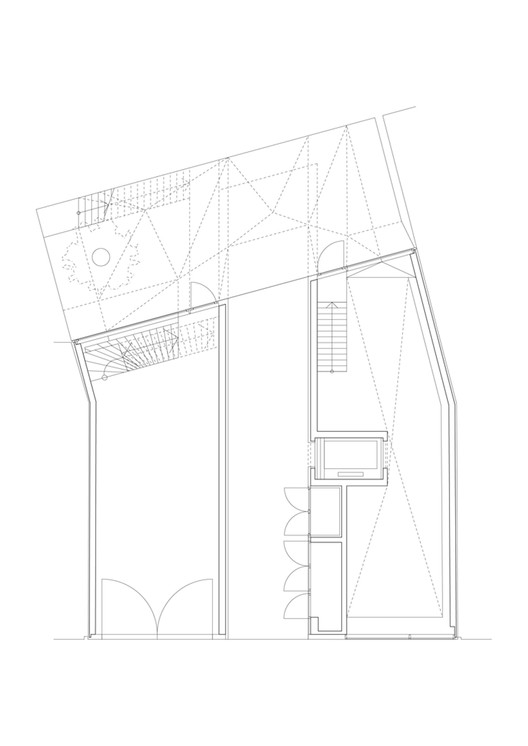.jpg?1369526360)
-
Architects: Brandlhuber+Emde, Burlon
- Area: 1353 m²
- Year: 2010
-
Photographs:Nathan Willock, Michael Reisch
-
Manufacturers: RODECA GMBH

Text description provided by the architects. The house on Brunnenstrasse 9 is an extension of the foundations of a building "ruin" that was the result of a bad investment in the ’90s. The existing consisted of the cellar walls towards the neighboring house, the street and the courtyard, and a cellar ceiling, with exception of the parts of the lift and the drive-through; the steel reinforcement of the incomplete building protruded from the street level. The found structure was not only included but was even further developed in the new building. The angles of sun rays determine the volume of the attic floor, maximizing the light exposure of the building in the back.














































